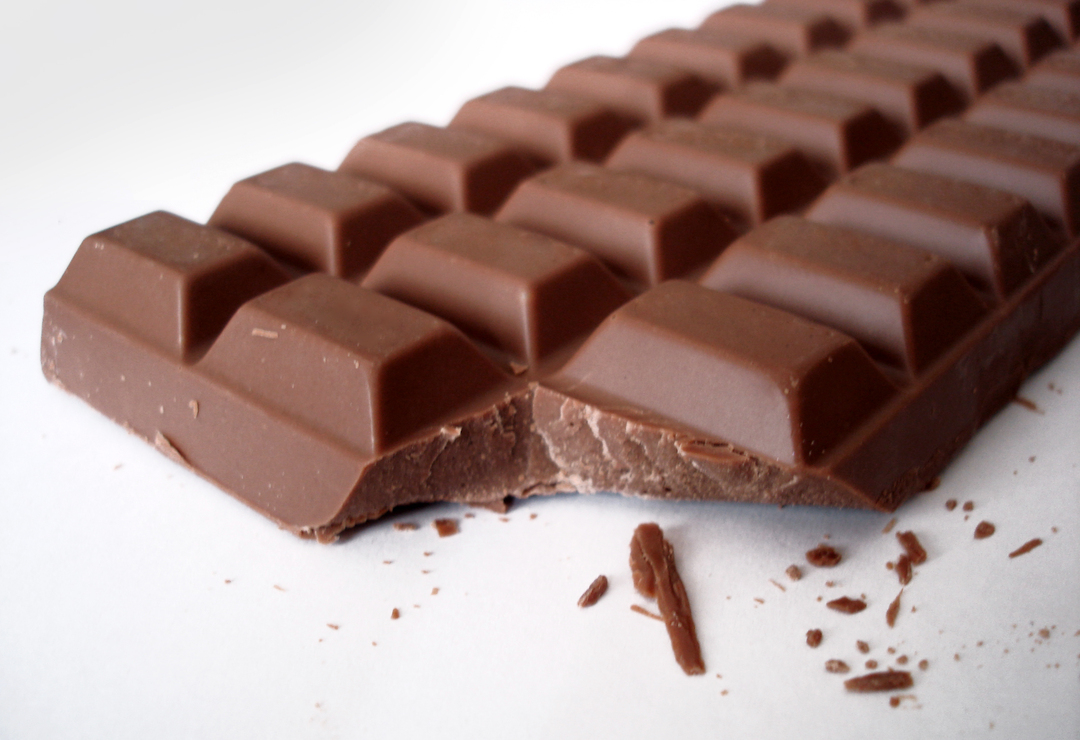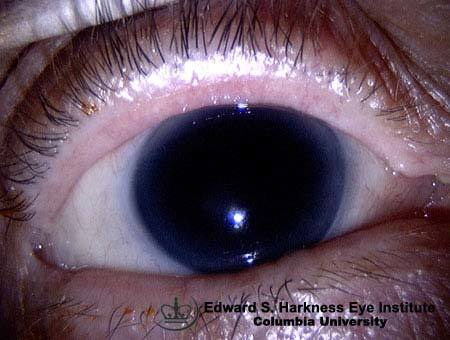Tear canal obstruction in newborns: symptoms and treatment

The obstruction of the lacrimal canal, according to medical statistics, is diagnosed in 5% of newborns.There are reasons to assume that the pathology is much more common, the problem can simply disappear before going to the doctor without causing complications.
All people in the normal surface of the eyeball with blinking regularly moistened with tear fluid.It is produced by the lacrimal gland located under the upper eyelid, as well as by additional conjunctival glands.This liquid forms a film that protects the eye from drying out and infection.In tears, antibodies and biologically active components with high antibacterial activity are present.The liquid accumulates at the inner edge of the eye, after which it passes through the special tubules into the tear sack, and from there it already flows down the nasolacrimal canal into the nasal cavity.
Note: Since babies can not explain that they are uncomfortable, parents need to be able to recognize the signs of the development of pathology.
Table of contents: Causes of impassability of the lacrimal duct Symptoms of obstruction of the lacrimal canal in newborns Complications of lacrimal duct obstruction Diagnosis Treatment of obstruction of the lacrimal canalCauses of obstruction of the lacrimal canal in newborns
While the baby is in the womb, the tear ducts are protected from ingestionAmniotic fluid with a special membrane.Instead of a film, a cork can be formed in the channel, consisting of a mucous secretion and dead cells.
When the newborn makes its very first breath, this membrane usually breaks( the gelatinous plug is pushed out), and the vision organs begin to function normally.In some cases, the already unnecessary rudimentary film does not disappear, and the outflow of tear fluid is disturbed.When it stagnates, and bacterial infection takes place, a purulent inflammation of the lacrimal sac develops.This pathology was called "dacryocystitis".
Important: dacryocystitis of newborns is regarded by doctors as a borderline between congenital anomaly and acquired disease.
Quite often, parents are confident that the baby has developed conjunctivitis, and begin without prior consultation with a doctor to wash the baby's eyes with antiseptic solutions and apply eye drops with antibacterial effect.These measures have a visible positive effect for a short time, after which the symptomatology again increases.The problem returns, because the main cause of the pathology is not eliminated.
Symptoms of plugging of the lacrimal canal in newborns
Clinical signs of dacryocystitis and obstruction of the lacrimal canal in infants are:
-
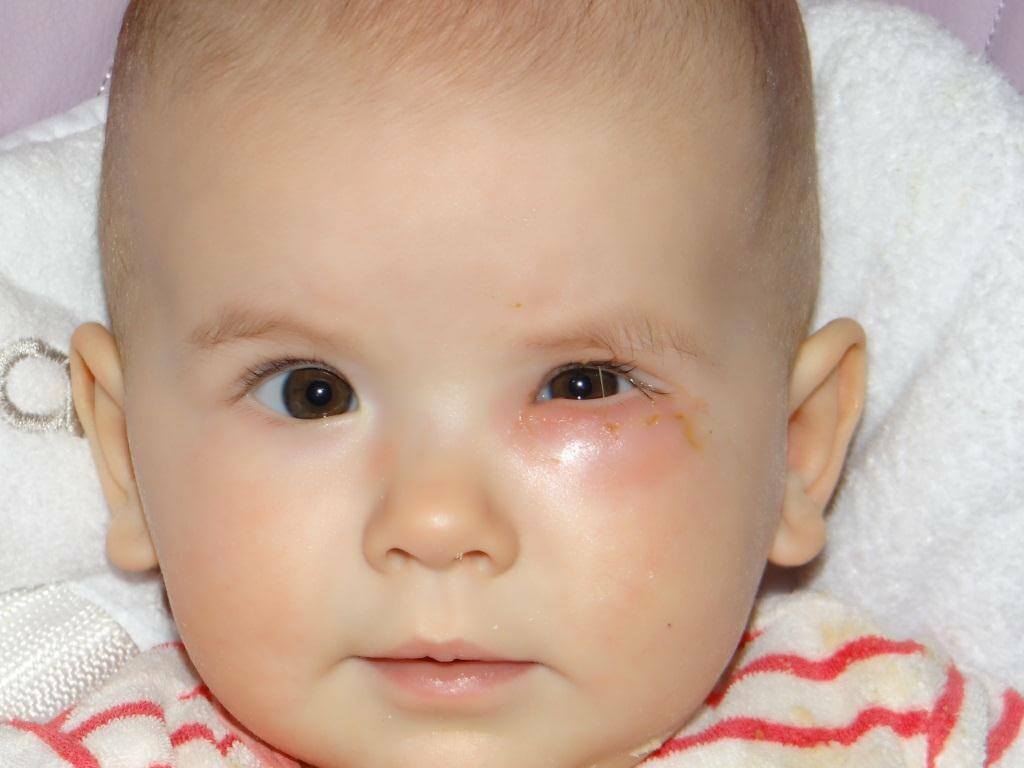 congestion of tear fluid;
congestion of tear fluid; - lacrimation;
- conjunctival hyperemia( not always);
- tenderness and swelling of the eyelids;
- "glued" after sleeping eyelashes;
- presence of a purulent discharge( the symptom may be "smeared" against the background of the use of antibacterial drugs).
Note: is diagnosed in most cases with one-sided obstruction of the lacrimal canal, but sometimes pathology can affect both eyes of the newborn.
A characteristic symptom of this disease is the secretion of mucous or purulent contents of the lacrimal sac in the conjunctival cavity with pressure in its projection.
Signs of development of complications( progressive purulent inflammation) are restless behavior of the child, frequent crying and an increase in overall body temperature.
Complications of tear duct obstruction in newborns
Complication of the pathological process may include dilatation and dropsy of the lacrimal sac accompanied by a noticeable local protrusion of the soft tissue.Accession of bacterial infection often causes purulent conjunctivitis.If adequate therapy is not started in time, the development of such a serious complication as the phlegmon of the lacrimal sac is not ruled out.In addition, if dacryocystitis is not cured, a fistulous tear sack can be formed.
Diagnosis
The doctor diagnoses "impassability of the tear duct in a newborn" based on an anamnesis, a characteristic clinical picture and the results of additional studies.
To detect obstruction of lacrimal canal in infants, the so-called.Collateral test( Vesta test).The diagnostic procedure is carried out as follows: the doctor enters thin napkin turuns into the nasal passages of the child, and a harmless colorant - 3% solution of collargolum( 1 drop into each eye) instills in the eyes.The sample is considered positive, if in 10-15 minutes the cotton wool has colored.This means that the patency of the lacrimal canals is normal.If there is no staining, then apparently the nasolacrimal canal is closed, and there is no outflow of fluid( West's test is negative).
Note: The collateral test can be considered positive if, after 2-3 minutes after instillation of the dye, the conjunctiva of the baby lightens.
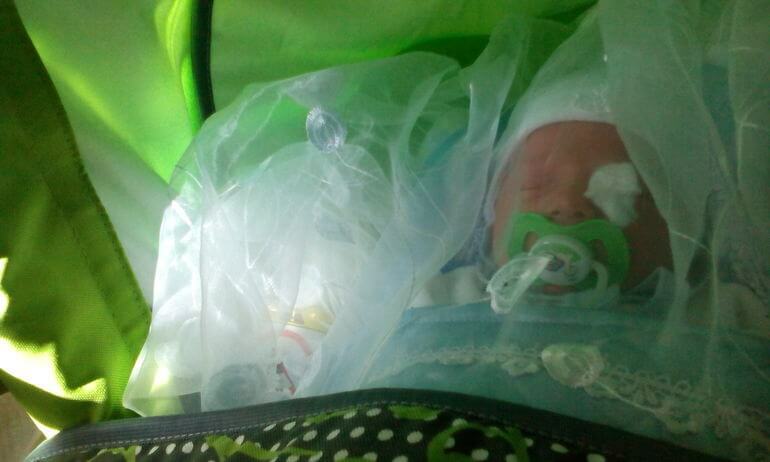
This diagnostic procedure does not allow an objective assessment of the severity of the pathology and the true cause of its development.With a negative sample, you must show the baby an ENT doctor.It will help to determine whether the outflow of the nasal mucosa is a cause of the outflow( for example, with a common cold against the common cold).
Important: differential diagnosis is performed with conjunctivitis.A number of clinical manifestations of these diseases have similarities among themselves.
Recommended to read:Treatment of impassability of the lacrimal canal in newborns
By the third week after birth, in many infants, the rudimentary film in the channels itself disappears, so that the problem is solved by itself.
Conservative treatment of tear duct obstruction
First of all, a local massage of the problem area( in the projection of the lacrimal canal) is shown to the baby.The procedure should be carried out by parents at home.Regular massaging promotes increased pressure in the nasolacrimal canal, which often contributes to rupture of the rudimentary membrane and restoration of normal outflow of tear fluid.
Massage for impassability of the lacrimal canal
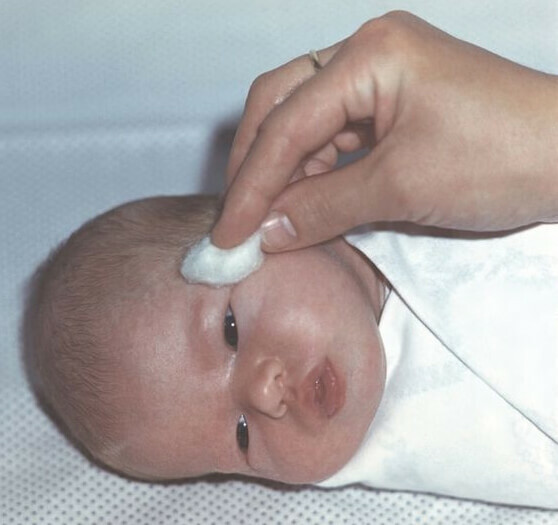 Before you do the massage, cut your nails as short as possible to avoid accidentally damaging the tender skin of the newborn.Hand should be thoroughly washed with hot water and soap to prevent infection.
Before you do the massage, cut your nails as short as possible to avoid accidentally damaging the tender skin of the newborn.Hand should be thoroughly washed with hot water and soap to prevent infection.
Pus is removed with a sterile cotton swab densely moistened with antiseptic - decoction of chamomile, a calendula or a solution of furatsilina 1: 5000.The eye slit should be cleaned from the discharge in the direction from the outer edge to the inner edge.
Please note: is not recommended to take tampons from gauze( bandage) for eye treatment, since they often leave separate villi.The solution of furacilin can be prepared by calculating 1 tablet per glass( 200 ml) of water.
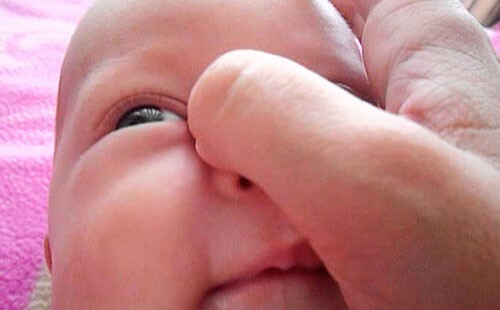 After antiseptic treatment, begin to massage gently.It is necessary to perform the index finger 5-10 jerky movements in the projection of the lacrimal canal.In the inner corner of the child's eye, one must grope for the tubercle and determine its highest point as far as possible from the nose.You need to press it, then slide your finger from top to bottom to the baby's nose 5-10 times, without interruption between movements.
After antiseptic treatment, begin to massage gently.It is necessary to perform the index finger 5-10 jerky movements in the projection of the lacrimal canal.In the inner corner of the child's eye, one must grope for the tubercle and determine its highest point as far as possible from the nose.You need to press it, then slide your finger from top to bottom to the baby's nose 5-10 times, without interruption between movements.
The pediatrician, Dr. Komarovsky:
tells how to cure the blockage of the lacrimal canal in newborns. Note: , according to Dr. EO Komarovsky, 99% of the positive effects can be achieved in a conservative way.
 When pressure is applied to the area of the lacrimal sac, a purulent discharge may appear in the conjunctiva.It must be carefully removed with a swab with an antiseptic and continue to massage.After the procedure, the baby should be dripped into the eye drops with antibacterial and anti-inflammatory action( Vitabact or 0.25% solution of Levomycetin).
When pressure is applied to the area of the lacrimal sac, a purulent discharge may appear in the conjunctiva.It must be carefully removed with a swab with an antiseptic and continue to massage.After the procedure, the baby should be dripped into the eye drops with antibacterial and anti-inflammatory action( Vitabact or 0.25% solution of Levomycetin).
Before beginning treatment of the impassability of the lacrimal canal and the appointment of antibacterial drops, it is advisable to carry out a bacteriological analysis of the pathogenic microflora detachable to detect sensitivity( or resistance), which is the cause of the purulent process.Burying in the eyes of albucid is undesirable, since crystallization of the drug, aggravating the course of the disease, is not ruled out.
Manipulation is conducted 5-7 times during the day for 2 or more weeks.
Surgical treatment of obstruction of the lacrimal canal
Often a child needs the help of a qualified ophthalmologist.If during the first six months of life it was not possible to restore a conservative way, the rudimentary film becomes denser.Eliminate it becomes much more difficult, and the risk of serious complications increases significantly.
Important: child surgery is usually performed at the age of 3.5 months.
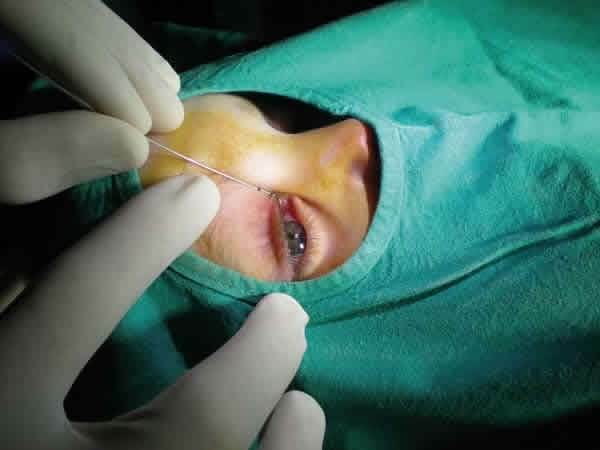 The obstruction of the lacrimal canal and the ineffectiveness of the massage procedures are indications for performing surgical manipulation-probing( bougie).This intervention is performed on an outpatient basis( in an ophthalmic room, dressing room or small operating room) under local or general anesthesia.During the treatment the doctor leads a thin probe into the canal and carefully breaks the pathological membrane.The total duration of manipulation is only a few minutes.
The obstruction of the lacrimal canal and the ineffectiveness of the massage procedures are indications for performing surgical manipulation-probing( bougie).This intervention is performed on an outpatient basis( in an ophthalmic room, dressing room or small operating room) under local or general anesthesia.During the treatment the doctor leads a thin probe into the canal and carefully breaks the pathological membrane.The total duration of manipulation is only a few minutes.
At the first stage, a short cone-shaped probe is introduced, allowing the channel to be expanded.Then a longer cylindrical Bowman probe is used.It moves to the tear bone, then it turns in a perpendicular direction and goes down, mechanically eliminating the obstruction in the form of a film or cork.After removing the instrument, the channel is washed with an antiseptic solution.If the operation was successful, the solution begins to pour out through the nose or into the nasopharynx( in this case, the baby makes a reflex swallowing movement).
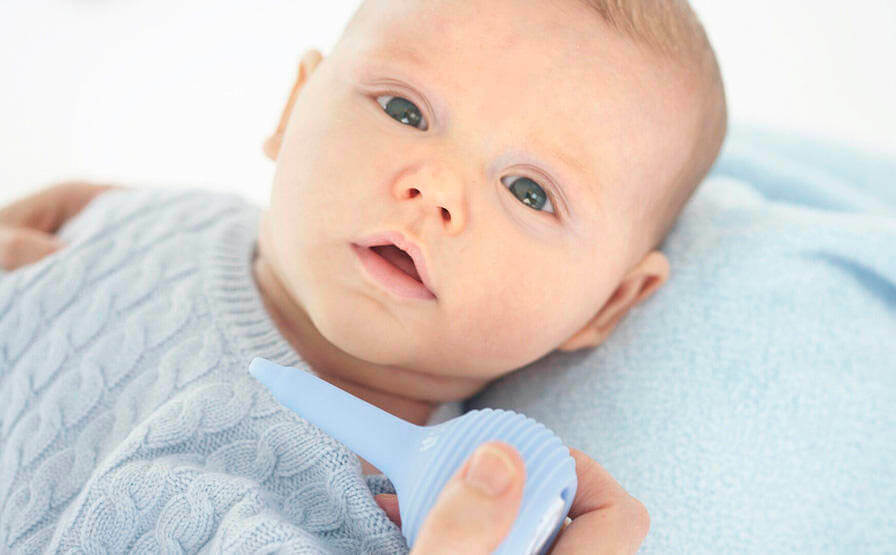
After such a radical intervention in most cases, the passability is quickly restored.Eye drops are also prescribed to prevent the formation of adhesions and the development of relapse.It shows the use of drugs, which include antibacterial component and glucocorticoids;They allow you to stop puffiness after the procedure.A child in the postoperative period is also shown a course of local massage.
If pus continues to be released 1.5-2 months after probing, then a repeat procedure is necessary.
A positive effect can be achieved in 90% of cases of diagnosed neonatal dacryocystitis.
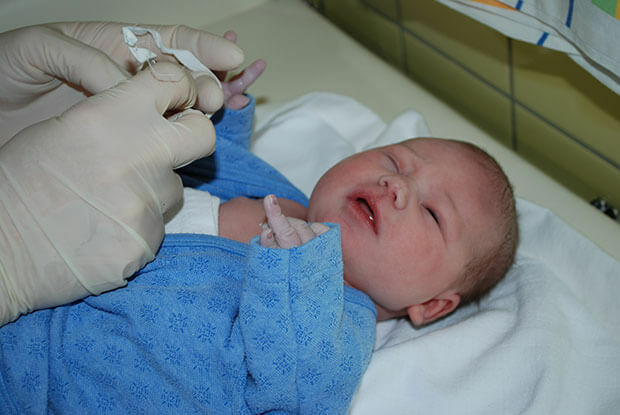 Inefficiency of bougie is an unconditional basis for conducting an additional survey.In such cases, it is necessary to establish whether the violation of the patency of the lacrimal canal is due to the curvature of the nasal septum or other anomalies in the development of the newborn.
Inefficiency of bougie is an unconditional basis for conducting an additional survey.In such cases, it is necessary to establish whether the violation of the patency of the lacrimal canal is due to the curvature of the nasal septum or other anomalies in the development of the newborn.
If pathology is not timely diagnosed or if adequate treatment has not been prescribed, then in the most severe cases, when the child reaches the age of 5, a rather complex planned operation is performed - dacryocystorhinostomy.
It is important to remember that the constant lacrimation, and, especially, the appearance of a purulent discharge in the eyes of a baby, is a good reason for promptly seeking medical help.Do not try to independently diagnose and self-medicate to avoid serious complications.
Vladimir Plisov, medical reviewer


